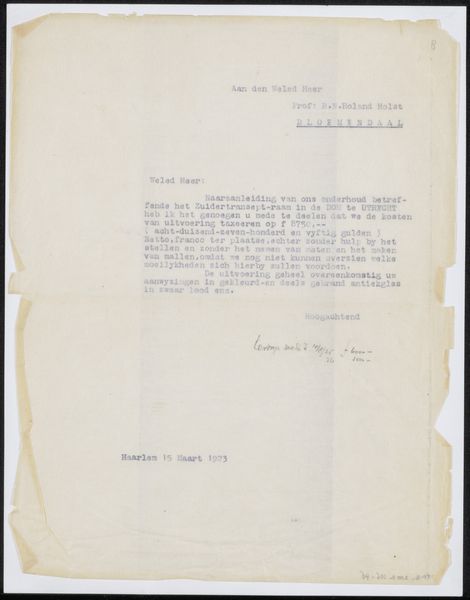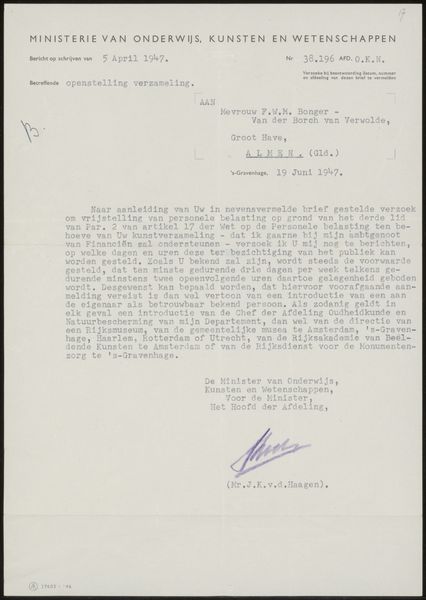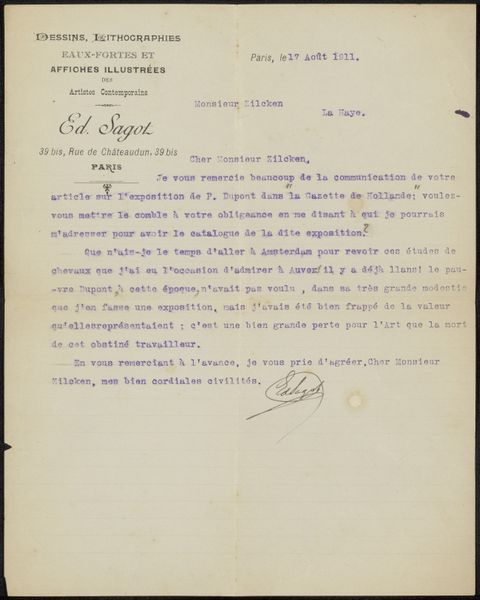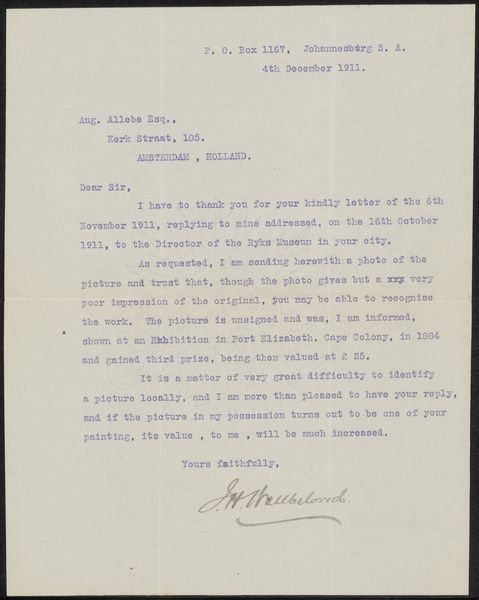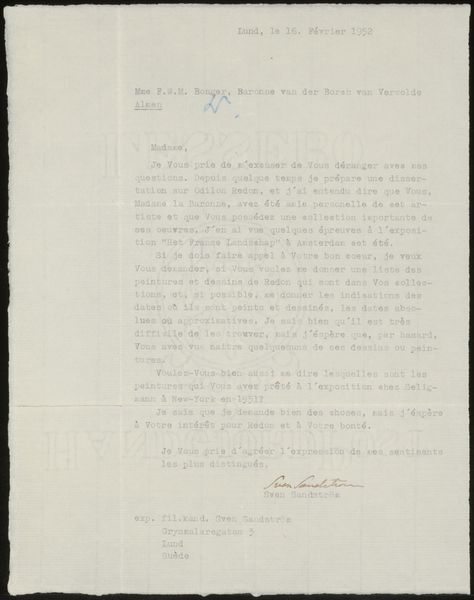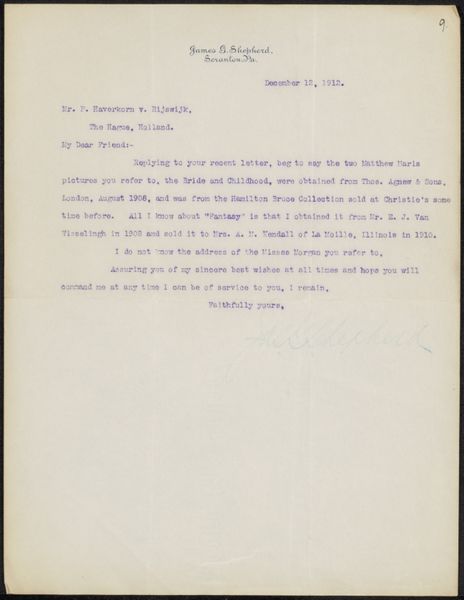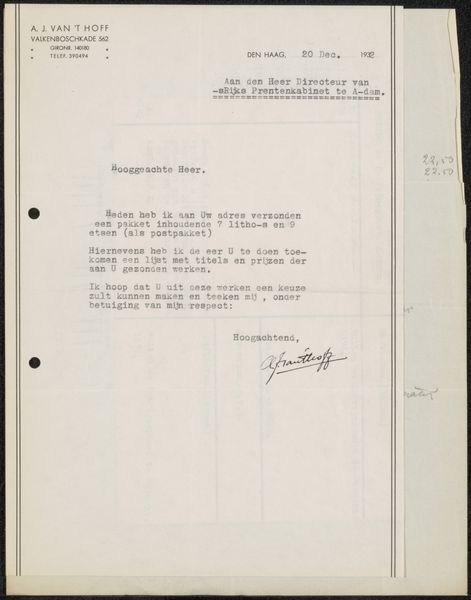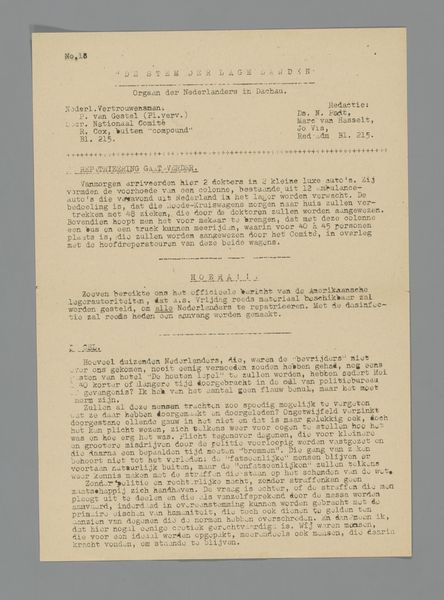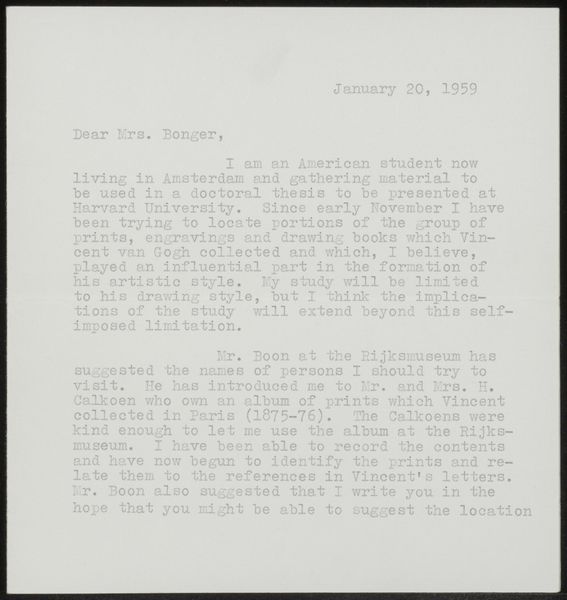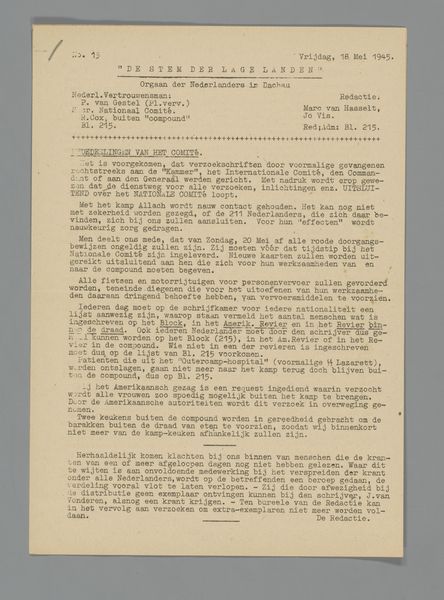
drawing, paper, typography, ink
#
drawing
#
paper
#
typography
#
ink
#
intimism
#
modernism
#
calligraphy
Copyright: Rijks Museum: Open Domain
Curator: So, here we have “Brief aan jonkheer Hendrik Teding van Berkhout (1879-1969)" by Frans Everbag, probably from between 1922 and 1926. It's an ink drawing on paper, and immediately the typography and calligraphy catch my eye, almost overshadowing the letter's contents. What are your initial thoughts? Editor: It feels so formal, but also somehow… intimate? Maybe because it’s a handwritten letter, even though it's clearly meant for official business. I'm curious, what stands out to you the most in this work? Curator: Well, from a materialist perspective, it's fascinating to consider the labour involved. Think about the production of the paper, the ink, and the skills needed for the precise calligraphy. This wasn't just about conveying information; it was about demonstrating status and skill through the materiality of the communication itself. The very act of handwriting signals a different kind of labor than, say, a printed announcement. How do you see the medium and the style functioning within the social context of the time? Editor: I see what you mean! The choice of calligraphy and fine paper elevate the message, signaling importance. It almost seems to blur the line between practical communication and a crafted art object. It’s not just the words, it’s *how* they’re presented that matters. Is it challenging the typical divisions we have between "high art" and everyday craft? Curator: Absolutely. It forces us to examine the social relations embedded in these materials. This isn't merely a letter; it's a testament to a system of production, skill, and class distinctions. And don’t forget about distribution: how would such a letter impact the recipient and how does that compare to the distribution of artwork? Editor: That's given me a lot to consider. I never really thought about a letter in terms of material production before. Thanks! Curator: Indeed. Examining such pieces through a material lens allows us a clearer glimpse into the networks of labor and value creation of the era, transforming how we see art.
Comments
No comments
Be the first to comment and join the conversation on the ultimate creative platform.
